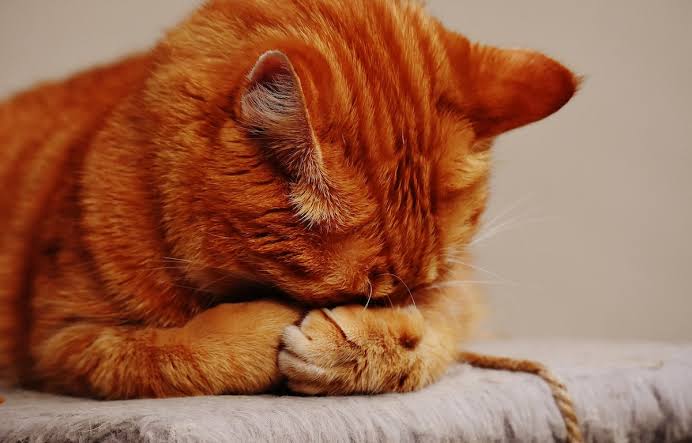Cats Illness Symptoms – How many times have you wondered what a combination of a cat’s illness symptoms is indicating about your pet’s health? Find clues right here.
About a Cat’s Illness Symptoms
A cat’s illness symptoms can be so varied and overlap so much that it’s extremely difficult to figure out what is going on. You know there’s something wrong with your pet, but what should you do about it? If only there was some kind of reference guideline that offered some clues.
Read too: How to Give Medication to Cats Easily
The following list offers some of the most common illnesses/disorders that cats face. They’re compiled in a handy reference table you can use to make a first-hand assessment of your cat’s condition. Armed with this knowledge, you’ll be better prepared to relate your cat’s symptoms to your vet.
Be advised that this is not a complete listing of every possible cat illness or symptom.
|
Cats Illness Symptoms |
||
| Illness | General Symptoms | |
| Ear Infections | Foul odor
Inflammation Itching/scratching Head shaking Head rubbing Swollen ear flap |
|
| Ear Mites | Inflammation
Itching/scratching Head shaking/rubbing Excess ear wax Coffee ground-like, tarry discharge |
|
| Fatty Liver Disease | Refusal to eat
Excess saliva Vomiting Yellowing of the skin and whites of the eyes Lethargy/depression Reduced muscle mass Seizures |
|
| Feline Diabetes | Excessive thirst
Increased urination Lethargy Weight loss Overall run-down condition Rear leg weakness |
|
| Feline Infectious Peritonitis (FIP) | Lethargy
Appetite loss Weight loss Breathing difficulties Eye problems Fever Vomiting Diarrhea Gray gums Yellowing of tissues and eyes Bloated belly Seizures Paralysis |
|
| Feline Leukemia | Low iron
Lethargy Eye problems Difficulty swallowing Weight loss Coughing Breathing difficulties Opportunistic infections Prolonged sores/wounds |
|
| Feline Immunodeficiency Virus (FIV) | Refusal to eat
Lethargy/depression Weight loss Frequent infections |
|
| Gum Disease | Foul breath
Reduced appetite Difficulty chewing Bleeding gums Receding gums Tooth loosening or loss Mouth ulcers Face rubbing |
|
| Hairballs | Retching cough
Vomiting wads of fur and food Intestinal blockage/constipation |
|
| Hyperthyroidism | Increased appetite
Weight loss Hyperactive behavior Irritability |
|
| Feline Kidney Disease | Excessive thirst
Lethargy Vomiting Foul breath Loss of appetite General weakness Increased urination Urination in odd/inappropriate places |
|
| Kidney Stones | Blood in the urine
Frequent urination in small amounts Urination in odd/inappropriate places Tenderness in the belly or along the back Difficulty walking |
|
| Lymphoma/Cancer | Skin irritation/ulcers
Reduced appetite Weight loss Lethargy Vomiting Diarrhea Excessive thirst Frequent urination Breathing difficulties Lumps/tumors Enlarged lymph nodes |
|
| Ringworm | Itching/scratching
Scaly skin Dandruff Chin acne Circular patches of hair loss |
|
| Skin/Food Allergies | Itching/scratching
Head shaking Red, sometimes puss-filled bumps Scaly skin Darkened skin Hair loss Compulsive licking Chewing/self-mutilation Red stained fur |
|
| Urinary Tract Infection | Blood in the urine
Difficult/painful urination Increased frequency of urination Compulsive licking of genitals Urinating in odd/inappropriate locations |
|
| Respiratory Tract Infection/Flu | Breathing problems
Fever Runny eyes Sneezing Nasal mucous discharge Poor appetite Excessive saliva |
|
When You Should Consult a Vet
Although every feline illness isn’t life-threatening, there are times when a vet’s expertise is required. How can you tell the difference?
- Your cat is unresponsive.
- The illness lasts more than 24-36 hours.
- Symptoms dramatically increase or multiply.
- Your cat is in obvious pain.
- Your cat is struggling to breathe.
- Your cat is bleeding profusely.
- Your cat is unable to have bowel movements or urinate.
- Your cat refuses to eat for more than 48 hours.
- Your cat stops drinking.
Generally speaking, use your common sense and intimate knowledge of your cat’s normal behavior to guide you. If your intuition is telling you it’s time to head to the clinic, do so without hesitation.
Final Caution
Keep in mind that this table is only a reference, and is not intended to be a substitute for professional veterinary care, especially in emergencies. Only a certified veterinarian is qualified to render a diagnosis for a sick cat, so never hesitate to take your pet to the vet when treatment is needed. You can do more damage by either waiting or trying to treat an illness by yourself.

